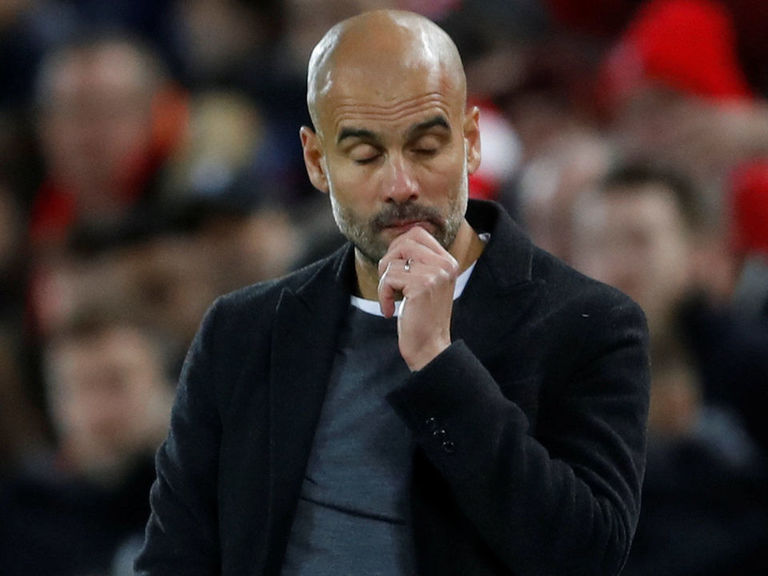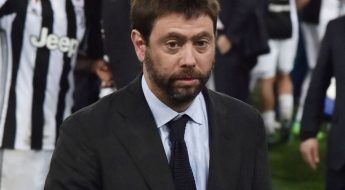Guardiola's gaffes assist Liverpool's comprehensive beating of City

Pep Guardiola’s tactical innovations have changed the landscape of English football in less than two years, and Manchester City in full flight presents a convincing case as the best side since the Premier League began in 1992.
But against Liverpool on Wednesday, the Spaniard got it drastically wrong.
With half an hour played, Nicolas Otamendi took it upon himself to surge up the park with the ball at his feet. There were colleagues available, and there should’ve been a nagging consideration that he isn’t Franz Beckenbauer, but the Argentinian let the ball bobble away and into James Milner’s reach. Around 15 seconds later, Sadio Mane headed past Ederson to make it 3-0.
This is an absolute masterclass by Liverpool…many will just see a goal but that was forced by how Liverpool set out…closing down Laporte & Kompany as well as out wide;happy to let Otamendi have the ball &play out with it & force the error & capitalise on it! Quality #LIVMCY pic.twitter.com/ZnlBd6q3iS
— KickItSoccerSchool (@KISS_soccer) April 4, 2018
The goal was emblematic of how City performed in the opening stanza; positional disarray, an inability to sensibly swipe space, and rushing in possession blighted the work of the visitor, and Guardiola’s tactics must take most of the blame for a considerable first-leg defeat in the Champions League quarter-finals.
The biggest omission was that of Raheem Sterling. The 23-year-old has scored 21 times this season – the same number as his previous two terms combined – but was sacrificed for Ilkay Gundogan. A popular assumption was that the change was intended to bulk up the midfield – something that should raise questions given the last time City started with Fernandinho, David Silva, Kevin De Bruyne, and Gundogan in the middle was its awful beginning to the League Cup final against Arsenal in February. There could also be an argument that Sterling was left out because of how he flounders under the scrutiny of Reds fans following his controversial 2015 switch.
Raheem Sterling has failed to score or assist in any of his seven appearances against Liverpool
He has been on the winning side just once; a penalty shootout victory the League Cup.
Haunted by his former side. pic.twitter.com/M7mitPsnMA
— Squawka Football (@Squawka) April 4, 2018
Whatever it was that encouraged Guardiola to shuffle his pack – a misguided tactical call or being overly concerned about protecting Sterling – it knocked everything off balance.
The midfield crumpled in on itself, with only Fernandinho assuming a distinct position and the other three ineffectually milling around in a shape that often resembled a distorted diamond. Gundogan was especially weak, making just 48 touches before he was substituted after 56 minutes.
With the 4-3-3 inexplicably set aside, Leroy Sane also cut a confused figure in a lopsided attack. He wasn’t a winger, a strike partner to Gabriel Jesus, or a No. 10, and his clear bewilderment facilitated Trent Alexander-Arnold’s best appearance for Liverpool in his young career. With only Sane struggling nearby and no support on his right, Jesus’ involvement was restricted to six passes in the first half – three of which were from kick-off – and he spearheaded a side that wasn’t able to record a shot on target throughout the tie.
Gabriel Jesus’ heatmap in that first-half pic.twitter.com/kZGcPgSRtE
— David Wall (@1DavidWall) April 4, 2018
If Bernardo Silva was Sterling’s replacement, the 4-3-3 schematic would have been maintained, and the latter would’ve been spared the abuse that he often cowers under. Instead, City’s unfamiliar formation was ruffled by Liverpool.
There were obviously issues in defence, and most of them centred around the decision to field Aymeric Laporte on the left of a back-four. Mohamed Salah is best dealt with by a right-footer at left-back; that way, he isn’t running onto the weaker side of a full-back when he cuts in. City had a ready-made player for that role in Danilo. With Danilo on the left-hand side, Laporte would’ve then been the go-to ball-playing centre-half, thereby culling Otamendi’s intermittent habit of spreading diagonal balls onto the laps of spectators in the first row. Few City representatives left Anfield with any credit, but Otamendi was handed too much trust and, as a result, challenged Gundogan and Sane as his team’s worst player.
There’s a slight hope that this tie is salvageable, but Guardiola’s plan will have to be exemplary in the reverse fixture next Tuesday. However, from the evidence of the opening tie between these two teams, Jurgen Klopp may have his counterpart’s number.



